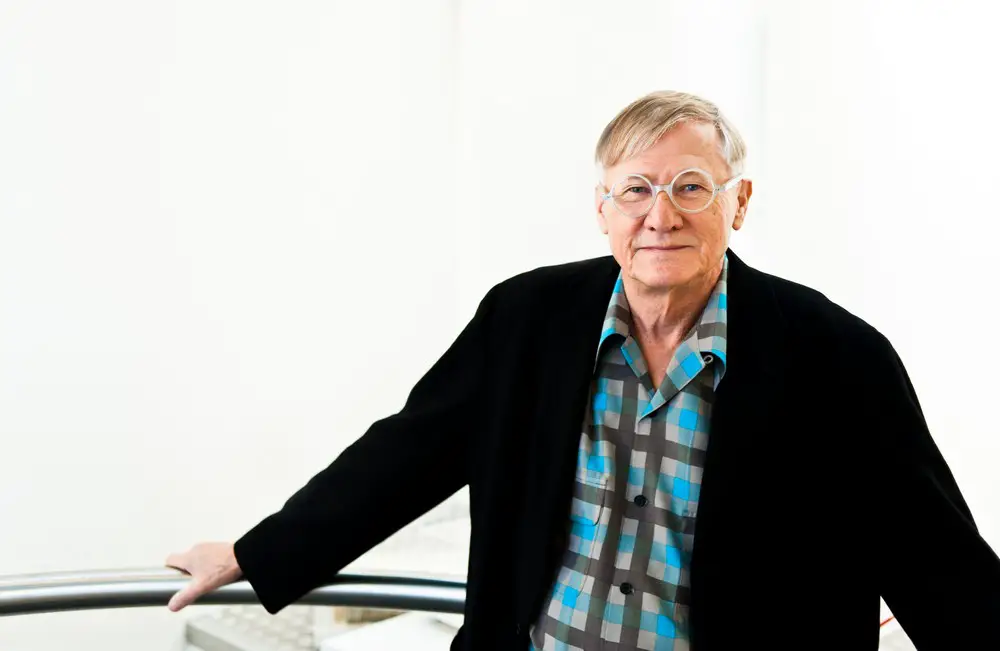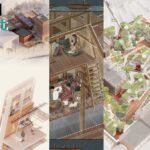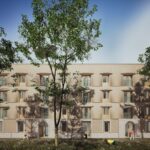RIBA Gold Medal for Architecture Winner 2019, Sir Nicholas Grimshaw, List, Links, Architecture
RIBA Gold Medal for Architecture 2019 Winner News
British Architect Sir Nicholas Grimshaw Royal Institute of British Architects Award, England, UK
post updated 6 September 2024
27 Sep 2018
Sir Nicholas Grimshaw wins Royal Gold Medal for Architecture
• UK’s highest honour for architecture is approved personally by Her Majesty The Queen
• Renowned British architect awarded for his sustained contribution to architecture in the UK and globally
• Grimshaw is best known for his Modernist public buildings and large-scale infrastructure projects including the Eden Project and the International Terminal at London’s Waterloo station
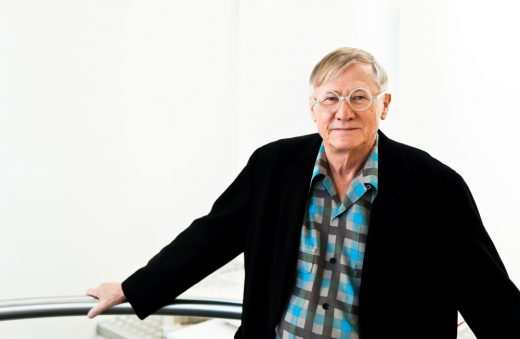
Sir Nicholas Grimshaw – Photo: Rick Roxburgh
RIBA Gold Medal for Architecture 2019 Winner, UK
The Royal Institute of British Architects (RIBA) is pleased to announce Sir Nicholas Grimshawwill receive the 2019 Royal Gold Medal, the UK’s highest honour for architecture.
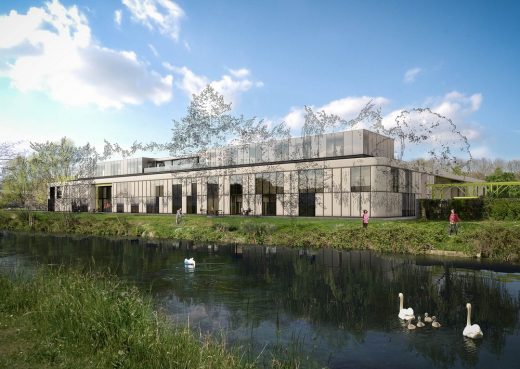
Bath Spa School of Art & Design
Given in recognition of a lifetime’s work, the Royal Gold Medal is approved personally by Her Majesty The Queen and is given to a person or group of people who have had a significant influence ‘either directly or indirectly on the advancement of architecture’.
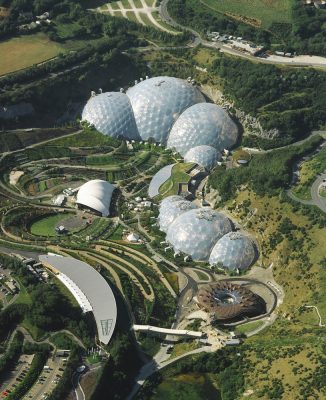
The Eden Project in Cornwall – Photo: Sealand Aerial Photography
Playing a leading role in British architecture for more than half a century, Nicholas Grimshaw is arguably best-known for the landmark International Terminal at London’s Waterloo station and the visionary Eden Project in Cornwall.
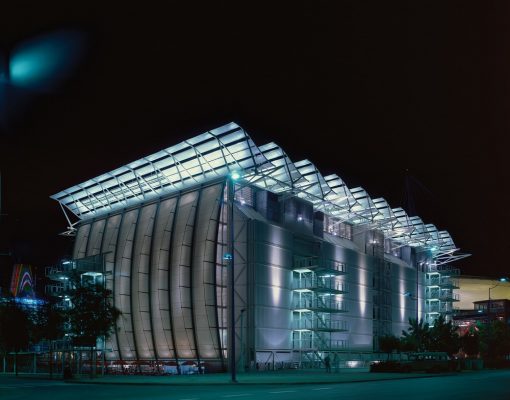
British Pavilion Expo ’92 in Seville – Photo: Jo Reid & John Peck
Linked by their scale and complexity, these two buildings illustrate Grimshaw’s extraordinary innovative approach to architecture and his modernist signature. Built within a superstructure of glass and steel, the International Terminal won the RIBA Building of the Year Award (the precursor to the RIBA Stirling Prize) in 1994 and is applauded as an exemplar of British transport architecture. The bubble-like biome structures of the Eden Project transformed a redundant clay pit into a world-renowned ecological centre and quickly became one of the UK’s most popular visitor attractions.
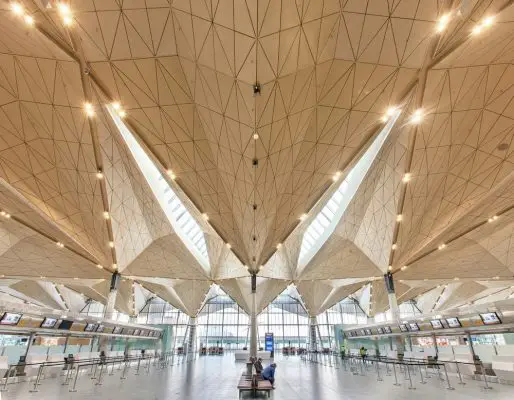
Pulkovo Airport in St Petersburg – Photo: Yuri Molodkovets
Nicholas Grimshaw established his own practice in 1980 and over the decades since, he and his team have created an impressive portfolio of built projects all around the world. From a suite of factories for Herman Miller, to innovative apartments in Regent’s Park and Camden Town, from a Spa in historic Bath to the Ludwig Erhard Haus in Berlin. Today, his firm employs over 600 staff with offices in Los Angeles, New York, London, Doha, Dubai, Kuala Lumpur, Melbourne and Sydney.

Thermae Bath Spa – Photo: Jason Hawkes
Grimshaw has chaired numerous national and international juries for both competitions and awards. He has lectured extensively around the world, examined and taught widely and is a Past President of the Royal Academy. In this latter role he played a key part in creating the newly opened extension of the Royal Academy at Burlington Gardens. His influence on and support of a generation of architects has a lasting and profound impact on the practice of architecture today.
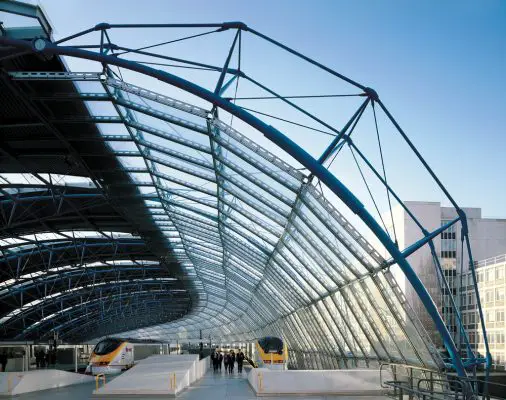
International Terminal Waterloo – Photo: Jo Reid & John Peck
On hearing the news that he will receive the Royal Gold Medal in 2019, Sir Nicholas Grimshaw says,
“I am thrilled to hear about the Gold Medal and would like to thank those who supported my nomination. My life, and that of the practice, has always been involved in experiment and in ideas, particularly around sustainability; I have always felt we should use the technology of the age we live in for the improvement of mankind. I would like to thank everyone who has ever worked in the office for contributing to our bank of ideas, and for helping to make it an enjoyable and humanistic place.”
RIBA President, Ben Derbyshire says,
“It was my privilege to chair the panel that selected Sir Nicholas Grimshaw for UK architecture’s highest accolade. For more than half a century, Sir Nicholas’s influence has been exceptional.
He is responsible for an extraordinary number of buildings and infrastructure projects of international significance, and for the continuous development of an architecture which places technology at the heart of the aesthetic.
His influence on architecture extends beyond his work as a practitioner. He is an educator, champion for the UK architectural profession and for culture more widely. He is an inspiration to a future generation of architects and his recognition with this Royal Gold Medal is well overdue.”
The Royal Gold Medal will be presented to Sir Nicholas Grimshaw at a special ceremony in early 2019.
Sir Nicholas Grimshaw – Biography
Sir Nicholas Grimshaw graduated with Honours from the Architectural Association in 1965; he immediately started in practice and won many awards for his early work. Notable buildings include International Terminal Waterloo, the British Pavilion Expo ’92 in Seville, and the Eden Project.
In 1980, Grimshaw Architects was formed and now has over 600 people employed in eight studios worldwide. Sir Nicholas was elected to the Royal Academy of Arts in 1994 and was its President from 2004 to 2011. He has lectured in 23 countries and Grimshaw Architects has now won over 200 awards internationally. He continues to lead the partnership as Chairman.
7. The 2019 Royal Gold Medal medallist was nominated by Simon Allford, co-founder and director of Allford Hall Monaghan Morris, and chair of the board of trustees of The Architecture Foundation.
Supporters of Sir Nicholas Grimshaw’s nomination included:
• Sir Peter Cook
• Ted Cullinan
• Lord Norman Foster
• Frank Gehry
• Lord Richard Rogers
• Sir Antony Gormley
• Jane Priestman
Sir Nicholas Grimshaw by Simon Allford
I have known Nick Grimshaw since I worked for him in the early 1980s. At this time the practice was well established and known for its pursuit of a particular way of seeing and making buildings. The practice then was only a dozen people but its modus operandi – that has facilitated its growth into a major international practice – was already well established.
The focus then as now was on how buildings should be designed from the outset to respond for the need to change over time in use. The preoccupation was how plan and section could define use, structure and detail to allow for this change. Nick always understood that the life of a building begins once the architect’s engagement ends.
Nick’s particular view on the world thus combines an interest in architecture at the scale of infrastructure, with construction and detail. His focus is on how the technology of new and, wherever appropriate, old materials can work to make an architecture that engages in size (form and silhouettes), detail (celebrating the maker’s mark), energy performance, and long-term capacity for adaptive use. It is this breadth of interest that has made his work both distinguished and of importance to architectural discourse.
The relevance of Nick’s personal response to the challenges of making architecture in the modern era is demonstrated by the fact that his practice has now designed and delivered key projects around the world, all at very different scales and for very different client groups.
Nick’s influence on the profession also extends beyond his work as a practitioner. He has chaired numerous national and international juries for both competitions and awards. He has lectured extensively and around the world, examined and taught widely and is a Past President of both the Architectural Association and the Royal Academy. In this latter role he played a key part in garnering the support of painters, sculptors and printmakers, as well of course as the architects, in creating a new facility for, amongst other things, the permanent display of architecture in the new extension of the Royal Academy at Burlington Gardens.
It is for the reasons listed in the supporting documentation, following my nomination of Nick Grimshaw, I have been able to garner the support of seven Gold Medallists three of whom are also Pritzker Prize winners from both the UK and abroad and a host of other leading architects, artists, writers, critics and clients.
Supporter statements by Lord Norman Foster, Lord Richard Rogers and Sir Peter Cook
Sir Nicholas Grimshaw by Lord Norman Foster
Nick is a friend and a colleague whose work has had a great impact in defining the post-war era of British architecture, and his influence on the international architectural community is undeniable. His architectural outlook is very much based in an honesty towards materiality and structure – like me, he believes that every type of building merits the same care in design. Nick is a Royal Academician and served the Academy between 2004 and 2011 as its President with distinction. He was also elected as the President of the Architectural Association, his alma mater, and through his work he has made a distinctive contribution to British Architecture, which deserves recognition.
Sir Nicholas Grimshaw by Lord Richard Rogers
I am delighted to support Simon Allford’s nomination of Sir Nicholas Grimshaw for an RIBA Gold Medal. I’ve known Nick since he was a student at the Architectural Association and followed his career closely. He is an internationally renowned architect and was an exceptional President of the Royal Academy. His buildings are outstanding, from the early residential tower in London to his many transportation hubs around the world. I highly recommend him for an RIBA Gold Medal.
Sir Nicholas Grimshaw by Sir Peter Cook
Nick was a student of mine at the AA in 1964-5. He was a brilliant student (awarded SADG Medal). Rapidly afterwards he produced projects that were important theoretical and practical markers – the Bathroom Towers, the Metal Apartment Tower near Regent’s Park and the Factory at Bath. Rather than lapsing into ordinariness he continued to do great work.
Certainly, the railway station in Melbourne: that I have been to, is one of the most poetic and beautiful ‘high tech’ buildings in the world. Using his Waterloo Eurostar Terminal frequently, I knew from that first that I was inside something special. At a conference at his Berlin Stock Exchange building – I felt this again. Yael and I regularly drive away from our big local Sainsbury’s to his Camden Town: we prefer it. He’s a Great architect. He deserves the RGM.
The Royal Gold Medal 2019 images / information from RIBA
Location: UK
RIBA Royal Gold Medal Winners
Royal Gold Medal by RIBA
RIBA Gold Medal for Architecture 2020 Winner
RIBA Gold Medal for Architecture 2017 Winner
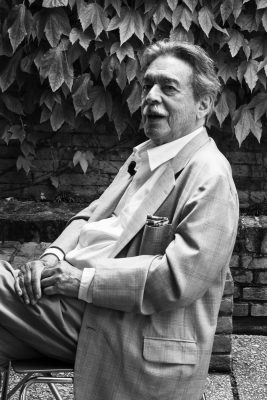
Paulo Mendes da Rocha © PMDR
Paulo Mendes da Rocha
RIBA Gold Medal for Architecture recent selection below
2010: I M Pei
2009: Alvaro Siza
2008: Ted Cullinan Architect
2007: Herzog and de Meuron Architects
2006: Toyo Ito
2005: Frei Otto – architect/engineer
2004: Rem Koolhaas
2001: Jean Nouvel
2000: Frank Gehry
1997: Tadao Ando
1989: Renzo Piano
1988: Richard Meier
1983: Norman Foster
1972: Louis Kahn
1959: Mies van der Rohe
1957: Alvar Aalto
1956: Walter Gropius
1953: Le Corbusier
1941: Frank Lloyd Wright
RIBA Stirling Prize
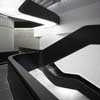
photo : Roland Halbe
RIBA Royal Gold Medal winner 2006 : Toyo Ito Architects
RIBA Royal Gold Medal winner 2007 : Herzog and de Meuron Architects
Architecture Design
Contemporary Building Designs – recent architectural selection from e-architect below:
Comments / photos for the RIBA Gold Medal for Architecture 2019 Winner page welcome

